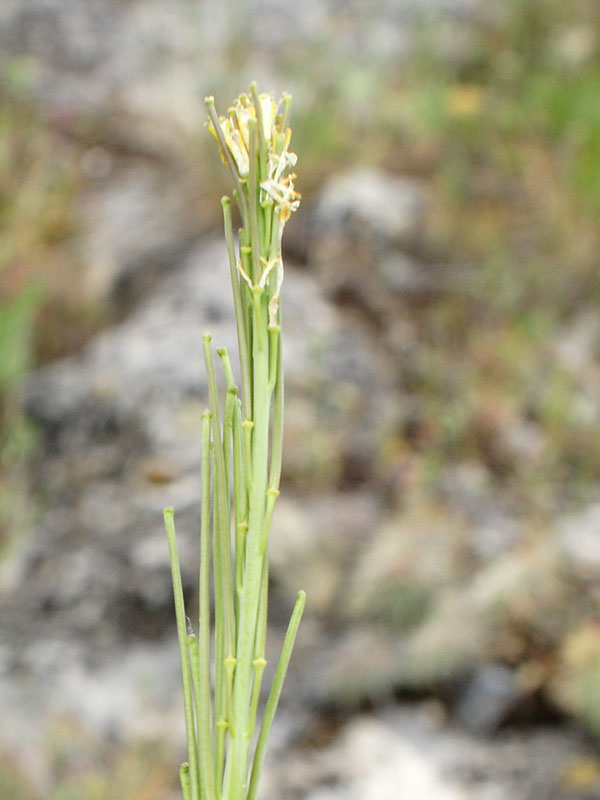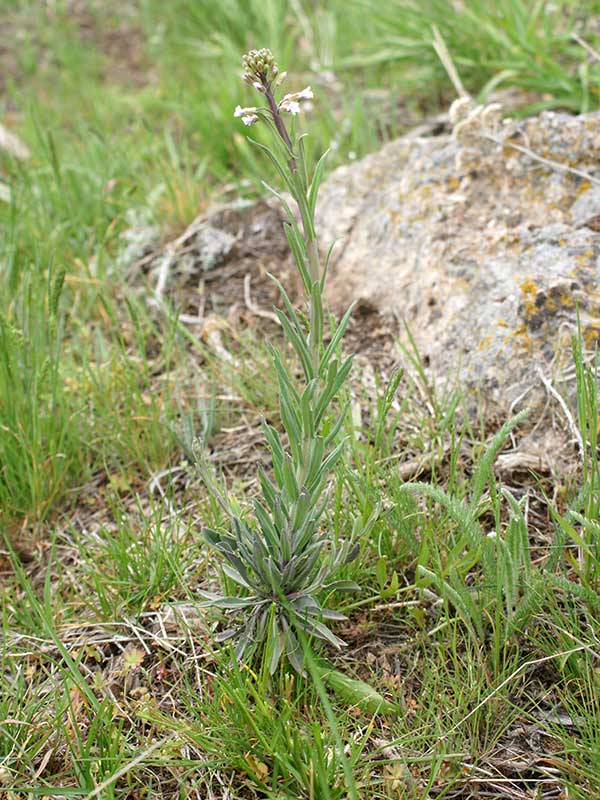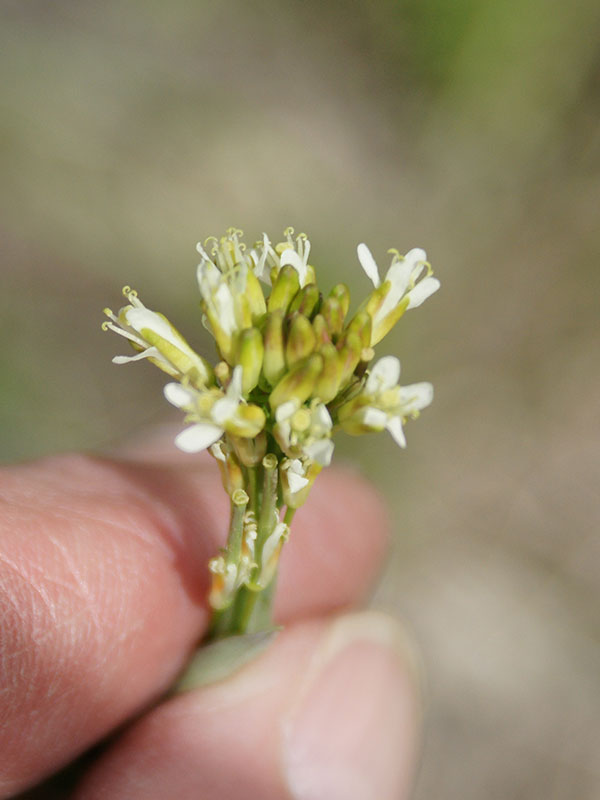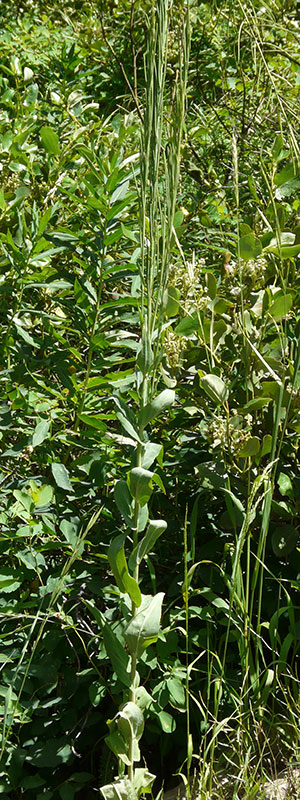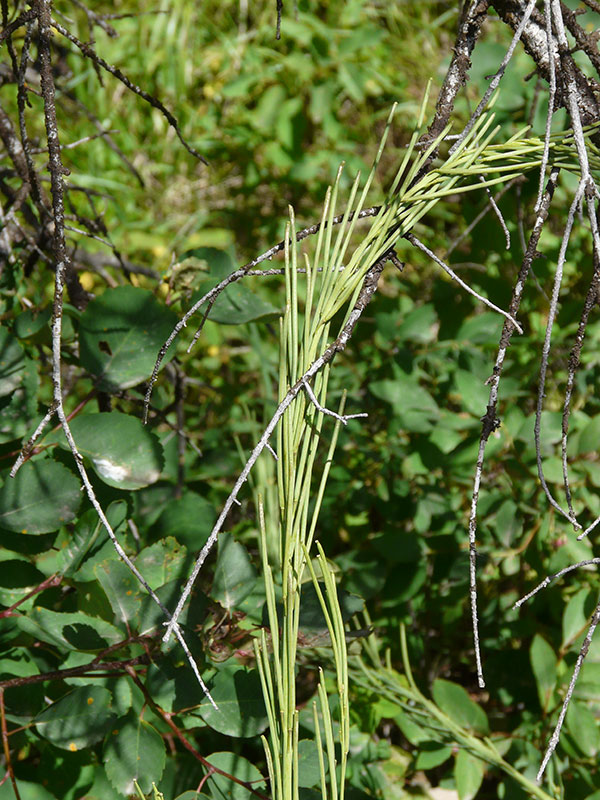Turritis glabra / tower mustard
- long (3″-ish) stick-like seedpods, erect and hugging the stem
- nondescript mustard-family 4 petalled flowers in a cluster at the top
- tall stem with leaves clasping the stem (no petioles)
- generally in exposed, dry habitats
Also known as: tower rockcress
Synonym: Arabis glabra
See also: Boechera retrofracta/reflexed rockcress
If, on first view, you can figure out that this plant is in the Brassicaceae – and that is not all that hard to do – then it is pretty easy to figure out that you are looking at tower mustard. There is nothing else like it (well, possibly reflexed rockcress) and you will probably have noticed it because of its very long, stick-like seed pods (siliques) held erect next to the stem. It won’t be too hard to see in the first place because it tends to be in disturbed areas or open, dry areas. In the Valley, you might find it on the side of a two-track through a forest (as at Murphy Creek) or on rocky slopes.
Starting with what you are likely to see first, the fruit is a long, slender silique, perhaps 3 inches long, that crowds and hugs the stem. The pods are straight and evenly thick throughout their length. The plants themselves are tall, especially for a brassica, up to about 3-1/2 feet, but occasionally significantly more. There may be a small tuft of typically nondescript flowers at the top.
The inflorescence of the tower mustard is a raceme that elongates during the fruiting stage, i.e. after the flowers are pollinated. Flowering continues even then. The blooming flowers are in a small, flat compact cluster at the top. Because it is yet another brassica, you will never identify this plant based on the flowers alone. Of course, there are 4 petals that may be spreading, but are often seen only poking out of the sepals by a little bit and not fully open. Each individual flower is teeny, the petals are creamy or white and the 4 sepals are green or yellow-ish. If you have a hand lens and for some reason are tired of looking at pretty flowers nearby, you can also see the stout style and several stamens.
Nevertheless, the plant does have some interesting aspects. First, it is a biennial (OK, so are many others in the family, but still…). It forms a rosette in the first year and bolts the next spring, putting up a single (usually) unbranched (usually) flowering stem. That stem has blue-ish/green leaves – about 3 inch long, 1 inch wide – with a pair of lobes at the base that wrap around and clasp the stem. The leaves become progressively smaller from the base to the top. The stem is also bluish, reflecting the thin waxy coat (but not hairs) that is important for light reflexion and moisture retention in a hot dry environment. Above all these leaves is the long and extending raceme.
| Color | |
|---|---|
| Family | |
| Blossom size | |
| Inflorescence size | |
| Inflorescence type | |
| When? | |
| Where? |
